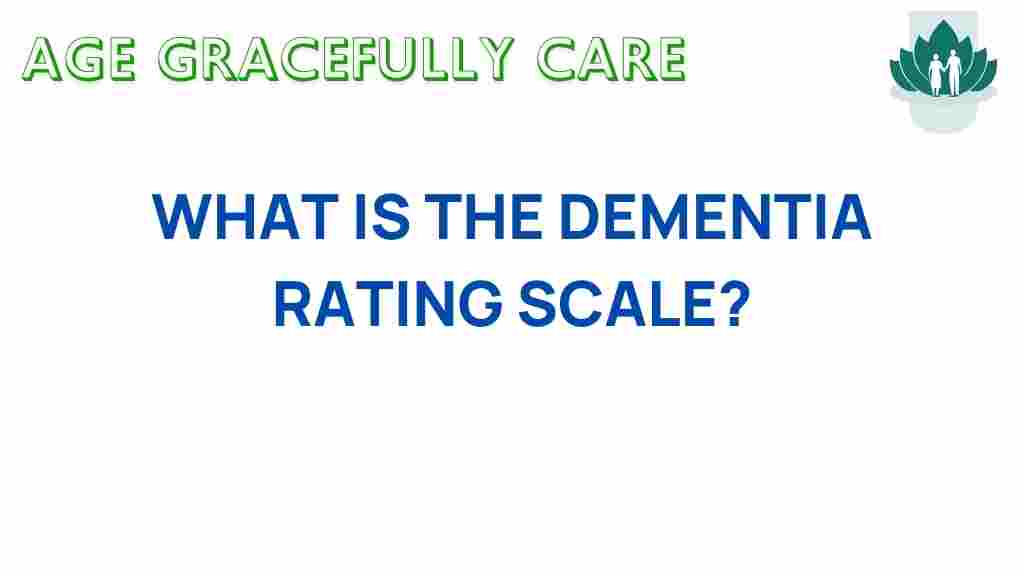Unraveling the Mysteries of the Dementia Rating Scale
Dementia is a complex and multifaceted mental health condition that affects millions of individuals worldwide. As the population ages, the incidence of dementia, particularly Alzheimer’s disease, is on the rise. One of the key components in understanding and managing this condition is the dementia rating scale, a vital tool for cognitive assessment used by healthcare professionals. In this article, we will explore the various aspects of dementia rating scales, their significance in diagnosis and patient evaluation, and effective care strategies for individuals affected by dementia.
Understanding Dementia and Its Impact
Dementia refers to a group of symptoms affecting memory, thinking, and social abilities severely enough to interfere with daily life. Alzheimer’s disease is the most common type of dementia, accounting for 60-80% of cases. The symptoms of dementia can vary widely, but they often include:
- Memory loss
- Difficulty communicating
- Impaired reasoning or judgment
- Disorientation
- Changes in mood or behavior
Understanding these symptoms is crucial for healthcare professionals as they work to evaluate and diagnose dementia effectively. The dementia rating scale plays a vital role in this process.
The Role of Rating Scales in Cognitive Assessment
Rating scales are standardized tools that help in assessing the severity of cognitive impairment and tracking changes over time. These scales provide a systematic way to evaluate a patient’s cognitive abilities, making them essential for diagnosing dementia and planning care strategies. Here are some commonly used dementia rating scales:
1. Clinical Dementia Rating (CDR)
The CDR is a widely used scale that assesses the severity of dementia and the impact it has on a person’s daily functioning. It includes six cognitive domains:
- Memory
- Orientation
- Judgment and problem-solving
- Community affairs
- Home and hobbies
- Self-care
Each domain is scored from 0 (no impairment) to 3 (severe impairment), allowing healthcare professionals to gauge the degree of cognitive decline.
2. Mini-Mental State Examination (MMSE)
The MMSE is a brief 30-point questionnaire that assesses various cognitive functions, including arithmetic, memory, and language. It is often used in clinical settings for the initial screening of cognitive impairment.
3. Montreal Cognitive Assessment (MoCA)
The MoCA is another screening tool that is more sensitive than the MMSE, particularly for mild cognitive impairment. It assesses multiple cognitive domains, including executive function, attention, language, and memory.
Step-by-Step Process of Using Dementia Rating Scales
For healthcare professionals, using dementia rating scales involves several steps:
Step 1: Initial Patient Evaluation
The first step is to conduct a thorough evaluation of the patient. This includes taking a detailed medical history, gathering information from family members, and observing the patient’s behavior in various settings.
Step 2: Administering the Rating Scale
Once the initial evaluation is complete, the healthcare professional selects the appropriate rating scale based on the patient’s symptoms and cognitive status. The scale is then administered in a quiet and comfortable environment to minimize distractions.
Step 3: Scoring and Interpretation
After administering the scale, the healthcare professional scores the patient’s responses according to the guidelines provided. Interpreting the scores requires knowledge of normative data and clinical experience to determine the severity of cognitive impairment.
Step 4: Developing Care Strategies
Based on the results of the cognitive assessment, healthcare professionals can develop personalized care strategies. This may include recommendations for therapy, medication, and lifestyle changes to support the patient’s mental health.
Troubleshooting Tips for Healthcare Professionals
When using dementia rating scales, healthcare professionals may encounter various challenges. Here are some troubleshooting tips:
- Patient Reluctance: Some patients may be reluctant to participate in assessments. Building rapport and explaining the importance of the evaluation can help ease their concerns.
- Environmental Distractions: Conduct assessments in a quiet space to minimize distractions that could affect the patient’s performance.
- Cognitive Variability: Be aware that patients may perform differently on different days. Consider multiple assessments over time for a more accurate evaluation.
- Family Involvement: Involve family members in the process, as they can provide valuable insights into the patient’s cognitive abilities and daily functioning.
Conclusion: The Importance of Dementia Rating Scales in Patient Evaluation
The use of dementia rating scales is crucial for healthcare professionals in the diagnosis and management of dementia, including Alzheimer’s disease. These tools not only provide valuable insights into a patient’s cognitive abilities but also guide the development of effective care strategies tailored to individual needs.
As dementia continues to impact an increasing number of individuals and their families, understanding and utilizing these rating scales will play an essential role in improving mental health outcomes. For more information about dementia and care strategies, visit Alzheimer’s Association.
By unraveling the mysteries of dementia rating scales, we can enhance our approach to patient evaluation and ultimately provide better support for those affected by dementia.
For a deeper dive into cognitive assessment tools, check out our comprehensive guide here.
This article is in the category Health and created by AgeGracefullyCare Team
